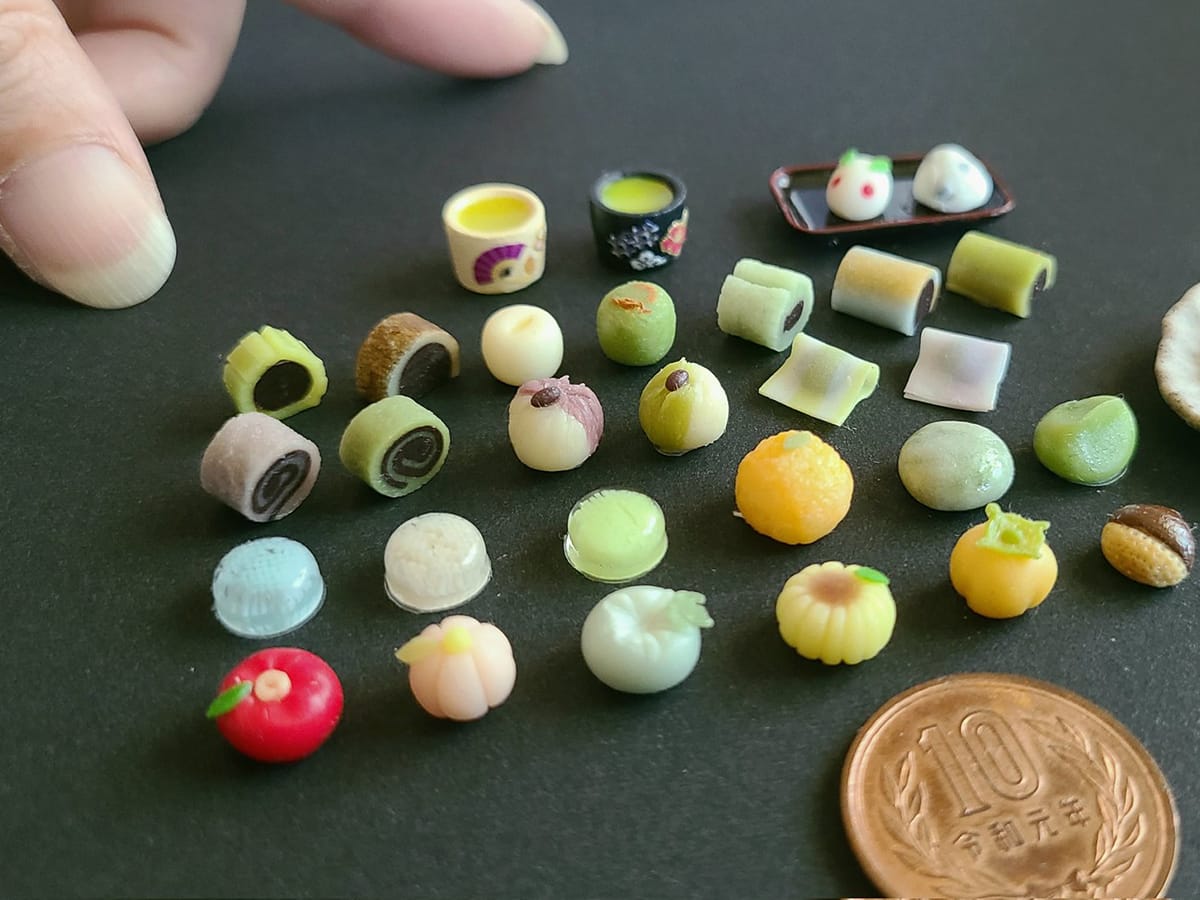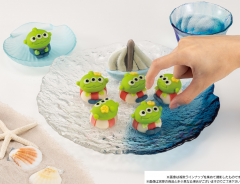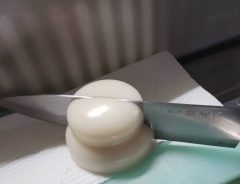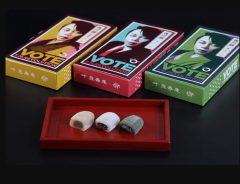
Source: よもぎの幸せ Yomogi no Shiawase (@yomogiminiature) - image used with permission
Miniature food artist makes surprisingly realistic tiny Japanese sweets, food, drinks and more
- Tags:
- Japanese sweets / miniature food / Miniatures / Wagashi
Related Article
-

Toy Story Aliens Reappear as Traditional Japanese Sweets in Convenience Stores For Summer
-

Sushi Cola And Sweet Sake Flavored Cream Puffs And Shaved Ice Make Summer Splash In Japan
-

‘Dig in’ to these cookies inspired by ancient Japanese burial mounds
-

Twitter user’s kitchen accident shows the scary power of mochi
-

Toraya’s Elegantly Refurbished Akasaka Flagship Store Is Truly Worth The Visit
-

T.M. Revolution produces original Japanese sweets to preserve Japan’s biggest lake


Japan has a long-standing reputation for achieving astonishing feats of miniaturization in mechanical devices and electronics, but it's also an aesthetic principle found in such artforms as bonsai trees, for example.
Japanese artist (and doll enthusiast) よもぎの幸せ Yomogi no Shiawase (@yomogiminiature), which literally means "Yomogi's Happiness," specializes in making miniature replicas of Japanese food and drink, with a particular affinity for Japanese sweets, bread, and the drinks that accompany them. She also makes intricately detailed tea sets, trays, plates, and more. Completely self-taught, and using resin clay and UV resin, she makes 1/8 size miniatures that look so delicious they could make any doll, doll collector, or miniature collector drool!
Let's take a look at some of her gorgeous Japanese sweets. The 10 yen coin provided for scale measures just under an inch (23.5 mm) in diameter.
Delicious Dango
You've surely seen them in manga or anime. Dango are chewy round dumplings made from rice flour mixed with uruchi rice flour and glutinous rice flour and usually bought in sets of three to five on a bamboo or wood skewer and served with various seasonings.
Here we have a mitarashi dango みたらし団子 basted in a sweet and salty soy-based syrup on the left, followed by a Botchan dango 坊っちゃん団子 and a Madonna dango マドンナ団子, two specialties from Ehime Prefecture. Behind them are two examples of nerikiri 練り切り, a type of Japanese wagashi made by kneading and mixing sweetened white bean jam, Chinese yam, and glutinous rice flour, and a popular medium for wagashi artists to express their artistic skill with beautiful colors and designs. The one on the left is asagao 朝顔 (Morning Glory) and the one on the right is himawari ひまわり (Sunflower). There's also an elegantly decorated cup filled with Japanese green tea. Of course, the lacquer tray and plate are also originals.
Reproduced with permission from よもぎの幸せ Yomogi no Shiawase (@yomogiminiature)
You can see how small these dango are in this photo. (The dango on the right is yomogi (mugwort) with anko on top)
Reproduced with permission from よもぎの幸せ Yomogi no Shiawase (@yomogiminiature)
Another good way of seeing how tiny her creations are is looking at this set of photos in which the artist shows various kinds of miniature sweets such as: top left: kuri manjū 栗饅頭 (chestnut manjū cakes); top right: assorted dango; bottom left: macarons; bottom right: yomomogi anpan よもぎあんパン (mugwort cakes with anko inside, already bitten to show the filling).
A miniature world of wagashi
In this image, you can see a whole assortment of gorgeous wagashi. The nerikiri in the front row, from left to right are tsubaki 椿 (Camellia), momo 桃 (Peach), asagao, himawari, kaki 柿 (Persimmon). The last one on the right is a kuri manjū. In the second row, from left to right, the first three are original mizu-yōkan 水羊羹, a softer, sometimes translucent version of the traditional yōkan made with bean paste. Next, there's a daifuku, a kind of wagashi made with mochi and stuffed with fillings. This one's a mikan daifuku (Buntan) みかん大福(文旦), a type of citrus. Then, there are two types of yomogi kusamochi よもぎ草餅, a type of mochi with mugwort leaves kneaded into it. In the third row, from left to right, there are two types of original rolled angashi 餡菓子, wagashi with anko, followed by chakin-shibori 茶巾絞り, a type of wagashi made by squeezing bean paste or other ingredients into a ball with a muslin cloth. Here there are azuki bean and matcha versions. Next are two jōnamagashi, a sophisticated wagashi like nerikiri. Here there are yuzu and sakura versions. In the fourth row, from left to right, there are two types of angashi 餡菓子, matcha and plain yakimochi 焼き餅 (grilled mochi), followed by three types of namagashi 生菓子, which are wagashi which may contain fruit jellies, other gelatines, or sweetened bean paste. On the plate in the back is a cute rabbit usagi manjū うさぎ饅頭, and a mame daifuku 豆大福. Finally, on the plate at the right, there are three yatsuhachi 八ツ橋, a Kyoto specialty made from glutinous rice flour and sugar. They come in cinnamon, the standard flavor, as well as pink and Matcha, and a Fuji 藤 wysteria nerikiri.
Reproduced with permission from よもぎの幸せ Yomogi no Shiawase (@yomogiminiature)
Miniatures turned into accessories
Yomogi no Shiawase also makes various accessories that you can use as keychains, for example. Below, you'll see two adorable, half-eaten sweets, a melonpan and a yomogi anpan.
Reproduced with permission from よもぎの幸せ Yomogi no Shiawase (@yomogiminiature)
A miniature wagashi shop
If you stepped into the world of dolls, they would clearly buy their wagashi at a wagashi shop. Here, the artist imagined such a place, which also serves as the perfect opportunity for Yomogi no Shiawase to show off her creations:
Reproduced with permission from よもぎの幸せ Yomogi no Shiawase (@yomogiminiature)
You can see more images in this Tweet:
Tako-yaki and other foods
This talented artist isn't limited to sweets, either. For example, look at this tasty takoyaki set:
Reproduced with permission from よもぎの幸せ Yomogi no Shiawase (@yomogiminiature)
In this Tweet, you can also see a delicious-looking breakfast plate complete with pancakes, bacon and eggs, and another plate with pancakes, syrups and berries.
You can check out all of Yomogi no Shiawase's creations on her Twitter account and purchase ones you're interested in on her online shop here.